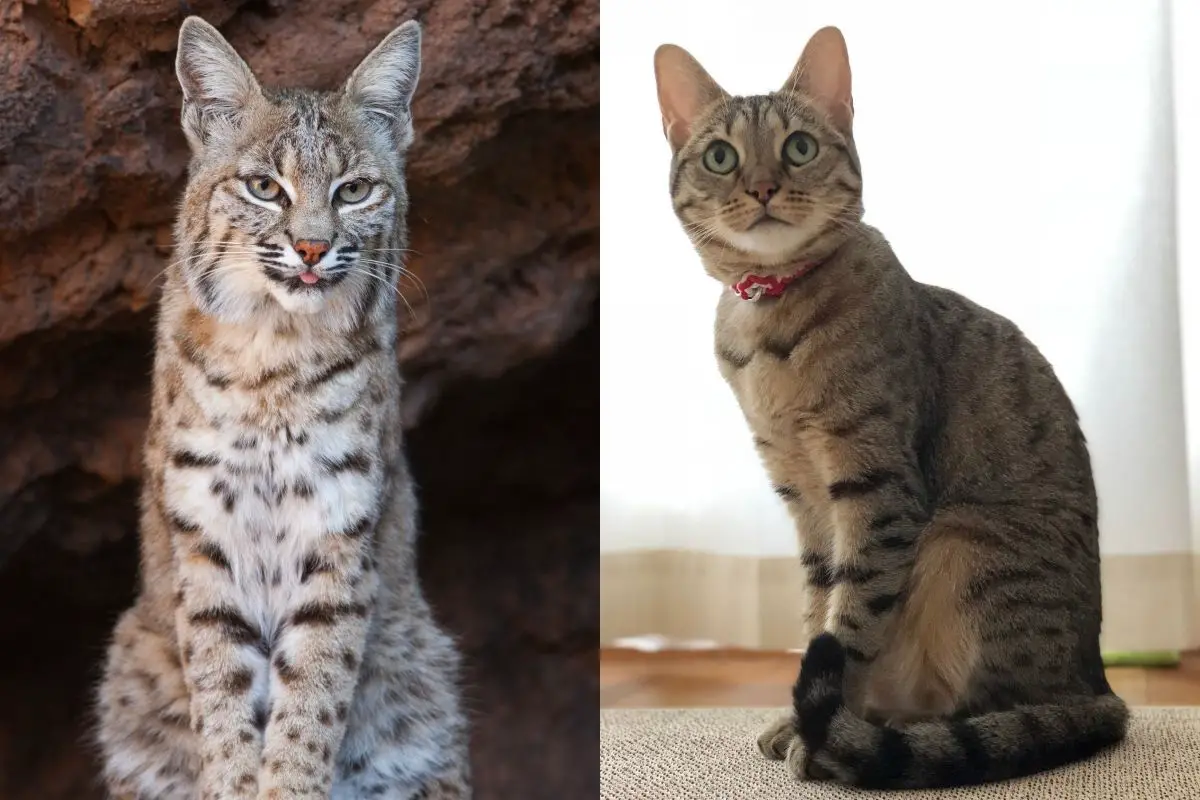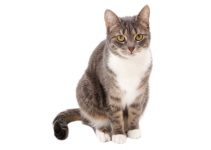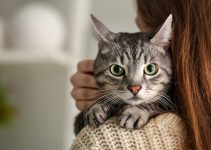Bobcats (which have the Latin name Lynx rufus) are found in territories across America, and are known for their speed and agility, but they also have some unique advantages over other cats.
What are these advantages and differences between the bobcat and other cats (specifically the ones that we keep as pets). How does each bobcat compare to a house cat (Bobcat VS House Cat)? Read on to learn about all the variations.
Contents
- 1 What Is A Bobcat?
- 2 Bobcat VS House Cat: What Are The Differences Between Bobcats And House Cats?
- 3 How To Spot A Bobcat (And Differentiate It From A House Cat)
- 4 Bobcat VS House Cat: How Large Are Bobcats Compared To House Cats?
- 5 Would A Bobcat Kill A House Cat?
- 6 Can You Domesticate A Bobcat?
- 7 Are Bobcats Able To Breed With House Cats?
- 8 Can A Bobcat Meow Like A House Cat?
- 9 How To Tell If My House Cat Is Mixed With A Bobcat?
- 10 Final Thoughts
What Is A Bobcat?
Bobcats are large felines native to North America. They are often called mountain lions because they live at higher altitudes than domestic cats. Bobcats are found throughout the United States and Canada, from Alaska to Florida.
The bobcat is a kind of lynx cat, and also goes by the names Lynx rufus or the red lynx. It has long legs, short ears, a small bushy tail, and a body covered with soft fur. Its color can vary from grayish-brown to reddish-gray, typically with white patches on the belly and legs, and black spots.
A bobcat’s diet consists mostly of small mammals such as mice, rabbits, squirrels, and hares. However, it will eat birds, reptiles, amphibians, fish, insects, and even carrion. It is an excellent hunter and is very agile and fast.
Because of its size and strength, it is one of the most dangerous predators in North America.
A bobcat’s lifespan is typically 10 years or more. In captivity, it usually lives up to 14 years.
Bobcat VS House Cat: What Are The Differences Between Bobcats And House Cats?
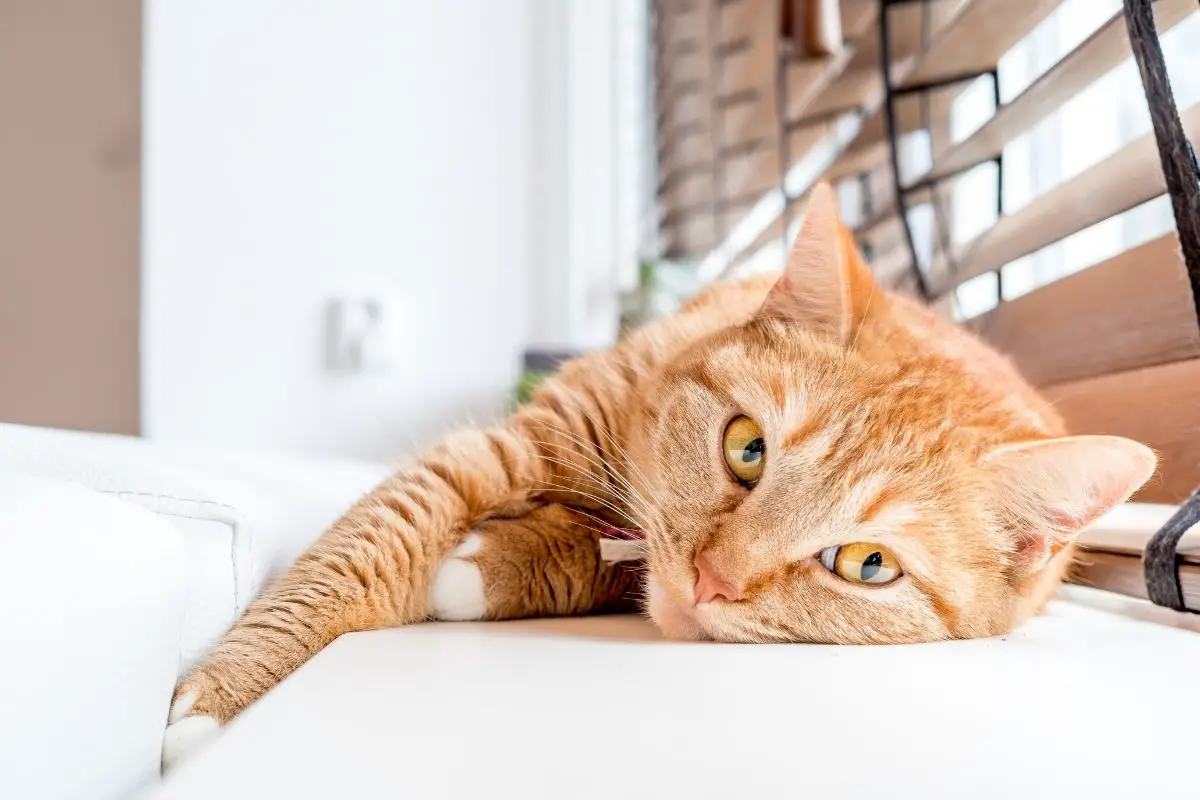
Kittens of both the bobcat and house cat species are playful, affectionate, and curious. They love to play and explore new things – it’s how all cats like to learn!
However, there are still a lot of differences between house cats and bobcats. However, there are differences in the way that they play and express their curiosity, so paying attention to their behavior can help you to tell the difference between the two species of cats.
Domestic cats are usually smaller than their wild counterparts – which can be seen from birth. The only way to mistake a house cat for a bobcat or vice versa is if the house cat is significantly older than the bobcat.
Bobcats can weigh up to a whopping 30 pounds, making them approximately twice the size of the average house cat, when both are fully mature.
The fur of a house cat is usually lighter in color than that of a bobcat, and has a different pattern.
Bobcat fur is reddish brown, with white on the tummy and legs, whereas house cats come in a huge variety of colors and patterns. Bobcats got their name from their short, stubby, ‘bobbed’ tail, which is very different from the long tail of a house cat.
That being said, there are some breeds of house cat, such as the Manx cat (from the Isle of Man), and the Japanese bobtail (bred originally in Japan), which have tiny stubby tails.
So, if you do see a cat with a shorter tail, it is not guaranteed to be a wild bobcat, and could just be an exotic breed of house pet. Even a bog-standard house cat can have a shorter tail, as cats do occasionally lose sections of tail in accidents.
Wild cats tend to be more aggressive than domestic cats. This is because they are used to hunting prey, and therefore need to be able to defend themselves against larger animals.
Domestic cats don’t normally hunt, but instead rely on scavenging food left out by humans. Wild cats are territorial, and will attack any animal that comes near their territory.
If you’re lucky enough to spot a wild cat, make sure to keep your distance and try not to get too close. You’ll probably want to stay well away from the cat, especially if it’s a mother with kittens.
Speaking of kittens, the length that a juvenile animal will stay under the care of their mother differs between the species.
Young bobcats will stay with their mothers for about a year before venturing out into the world on their own. This is because they need to learn to hunt to survive.
In contrast, it is common practice among pet breeders and rescues to let kittens be taken away from their mothers anywhere from 8 to 15 weeks old. This is because they don’t need to be taught to hunt, and will be fed regularly by owners instead.
It’s important to note that although bobcats are native to North America, they are also found living in captivity throughout other parts of the world, including Europe, Asia, Africa, Australia, and South America.
There are no known records of bobcats living in the wild outside of North America, however.
Bobcats can be differentiated from house cats by their eyes, which are typically yellow with black pupils.
The eyes of domesticated house cats are far more variable between individuals, with cats that have green, blue, brown, yellow, and even orange eyes being found in houses across the USA.
The ears of a bobcat are also a dead give away – they are large, with huge black tufts of point hair sticking straight up from them. Even breeds of house cat that have tufts on their ears typically do not have one that matches up size wise.
There are a few general bobcat behaviors that can help you to differentiate a bobcat from a house cat. These behaviors include (but are not limited to):
- Bobcats (like all kinds of cats) eat a carnivorous diet, hunting all kinds of wildlife to eat. They have been known to take down animals as large as carrion and deer, but typically prefer to hunt animals that are on the smaller side, such as small rodents, rabbits, squirrels, and birds. In contrast, house cats stick to things like small birds and rodents when they do hunt, but can also rely on a steady stream of kibble and wet food, so hunt out of instinct rather than necessity.
- Bobcats are usually solitary animals (unless they are mothers with young) and will avoid contact with people and other animals unless they are forced to interact. Bobcats will have a primary den where they spend most of their time, and a group of auxiliary dens for when they are out and about. House cats, however, are generally friendly towards humans, and are much more likely to approach.
- Bobcat urine is often described as having a strong musky odor, while house cat urine smells much less pungent. This is due to the fact that most house cats only urinate once every couple of days
How To Spot A Bobcat (And Differentiate It From A House Cat)

If you think you’ve spotted a bobcat, here are some tips to help you identify one:
- Look at its face. A bobcat’s face looks similar to that of a house cat, except that it has a longer muzzle. Its eyes are also set closer together.
- Look at its ears. Bobcats have ear tufts, while house cats have rounded lobes.
- Look at its tail. Bobcats have a short, stubby tail, while house cats have a long, bushy tail.
- Look at its paws. Bobcats have four toes on each paw, while house cats have five.
- Look at its coat. Bobcats have a light tan coloration, while house cats have different coats, that are black, white, calico or tabby.
- Look at its teeth. Bobcats have large incisors, while house cats have much smaller ones.
- Look at its body shape. Bobcats are stocky, while house cats are slender.
- Look at its markings. Bobcats have stripes running down their backs, while house cats lack these stripes.
- Look at its behavior. Bobcats are typically solitary creatures, while house cats and stray cats sometimes live in groups, and enjoy the company of people.
- Look for tracks. Bobcats leave scratch marks behind them, while house cats withdraw their claws, so they don’t appear in their tracks.
- Listen for hissing. Bobcats hiss when they feel threatened or angry, while house cats hiss far less frequently, and usually only when they are fighting another cat for territory.
- Look for scars. Bobcats produce scars that look like those of a dog, while house cats produce scars that look a lot smaller. Additionally, bobcats defecate in holes dug into the ground, while house cats defecate in litter boxes.
Bobcat VS House Cat: How Large Are Bobcats Compared To House Cats?
As we have already established, bobcats are a lot bigger than pet cats, to an average of 100%.
Though in most parts of their appearance they look like a scaled up version of a house cat, the hind quarters of a bobcat are noticeably bigger – they use these super strong, bulky back legs to jump and climb through their habitat.
Bobcats are a medium-sized wild cat, which often weighs somewhere between 11 and 68 pounds (for a male cat) and 9 to 33 pounds (for a female cat).
In height, a bobcat is usually about 18 to 23 inches tall (when stood up, from paw to tips of ears). In length, a bobcat is typically somewhere around the 31 inches mark (from nose tip to the end of the tail).
The bobcat is the most common wild cat throughout the U.S., with about 1 million animals, living in a wide variety of habitats, including deciduous and conifers woods, semidesert, and swamps.
Bobcats are very adaptable and can survive in a variety of conditions, including cold winters.
Female bobcats are solitary creatures who have home territories ranging from 1-37 square miles.
Male bobcats have no fixed territories and travel hundreds of miles in searching for females and food.
You used to be able to find bobcats all across the entire continent of North America, but its range has narrowed to almost entirely within the United States.
Occasionally, you will see them in Canada, but you will not find them in treeless prairies that are common in Canada, as the cat likes cool shades.
Would A Bobcat Kill A House Cat?
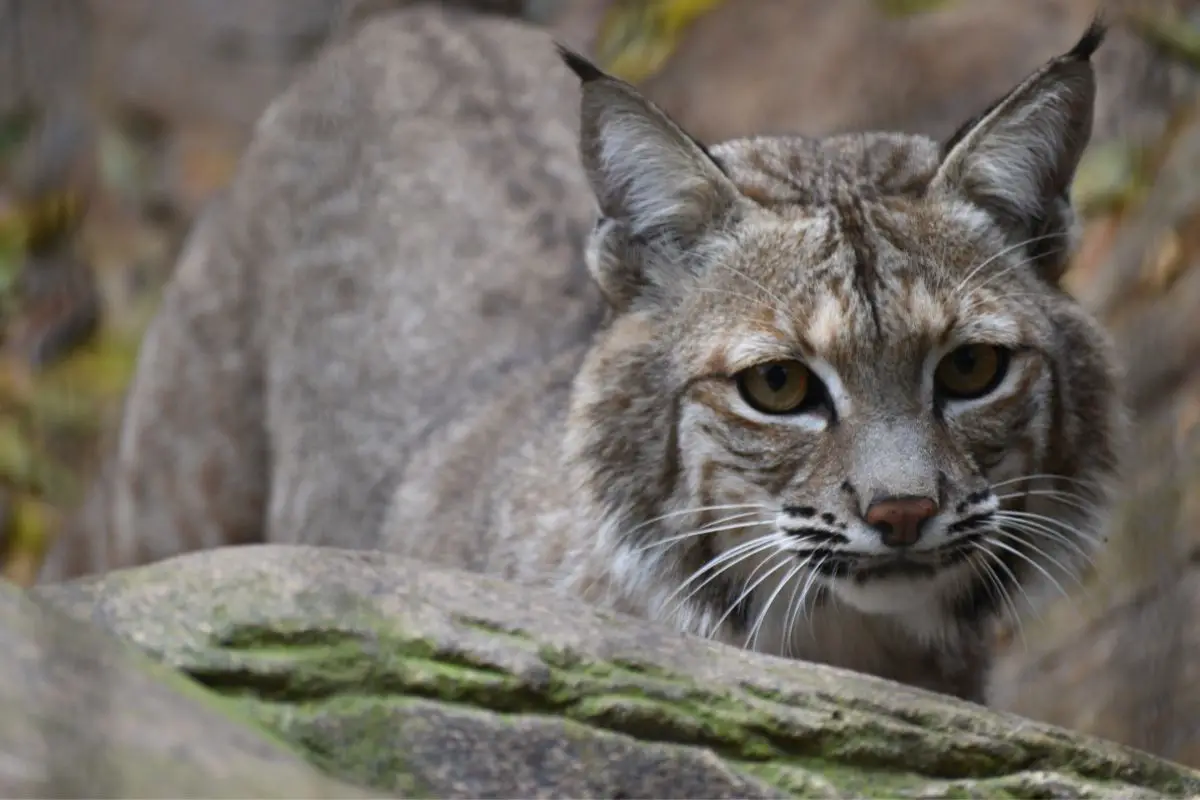
Bobcats are carnivorous felines that eat rodents, birds, and other small animals. They are often seen as pests by farmers because they attack livestock – especially small animals, such as chickens or ducks.
However, they tend to leave house cats and farm cats that are allowed to roam outside alone. This is both because they are a feline companion, and because house cats are able to put up a good fight, as a predator, with sharp claws and teeth.
In addition, bobcats rarely threaten people, and they prefer to avoid confrontation. However, they will defend their young, and they will fight back if cornered. Their claws and teeth can cause serious injuries.
Bobcats are very good hunters, and are found in almost every state. There are about three million of these animals roaming across the USA.
Usually, their favorite food is rabbits, but they also eat rodents, lizards, and snakes.
If your cat is in a position where an animal could be attacked by a bobcat, then you should take care of your pet – and make sure that time outside is supervised, or that they stay inside.
are large cats that prey on smaller animals, eating almost anything that moves, and are also very territorial about other cats being within their area.
So, if you have a cat that likes to get into cat fights to establish their territory, then you should probably keep them inside to prevent them getting into scraps, and keep them safe.
Most of the bobcats that are killed are done so by people who want to protect their pets.
Bobcats are strong enough to jump over fences and climb walls, so watch your pets in the garden if you are in bobcat country. Small dogs, rabbits, kittens, and guinea pigs are all at risk, along with other animals.
Their agility makes them dangerous predators, so the people who leave their pets outside should be aware that these cats are very fast and agile – a small fence isn’t going to stop them, making the bobcat a very dangerous animal
They rarely attack humans, but they do kill many domestic animals.
A bobcat usually weighs around twenty pounds, but they are not big enough to fight off larger animals like rottweilers. They eat a lot of different kinds of prey including birds, rabbits, mice, and even some smaller mammals.
Attacks on people are very rare, but there have been cases where cats that were thought to have rabies have killed people through biting and subsequent illness.
Can You Domesticate A Bobcat?
Bobcats are wild animals that attack anything that moves, meaning that they are very dangerous and unpredictable, so no, they cannot truly be domesticated.
Like most animals that are reared by a human, a ‘domesticated’ bobcat that is brought up around people may be friendly at first, but instinct and evolution will eventually get the better of the cat, and influence its behavior so that it becomes far more aggressive.
If you try to keep a bobcat as a domestic pet, there can be utterly disastrous consequences, for you, other pets, and any other people you have in your house (especially children).
That being said, keeping a bobcat as a pet is not illegal in all states (though it is unlawful in some, so be sure to check). In any case, people who keep them as pets must obtain permits and insurance. Children playing near them could get injured or killed.
Overall, we believe that wild animals should be free to roam wherever they please, and strongly recommend that you don’t try to domesticate, tame or keep a bobcat as a pet.
Capturing them for commercial purposes is wrong, and taming wild animals is different from domesticating them.
This is because domesticating an animal is a long term process (in some cases, it takes thousands of years by generations and generations of people), by which a human alters the genes of an animal to make it more suitable for human needs.
This process does not occur naturally over time, but is done intentionally based on what the human wants. Selective breeding was used to change the behavior, characteristics and looks. Wolves were domesticated by early humans, so we have dogs.
Bobcats are genetically totally wild, so you can’t just domesticate one because you fancy it as a pet. Stick with house cats, which have already been domesticated, and save yourself all the trouble and danger.
Are Bobcats Able To Breed With House Cats?
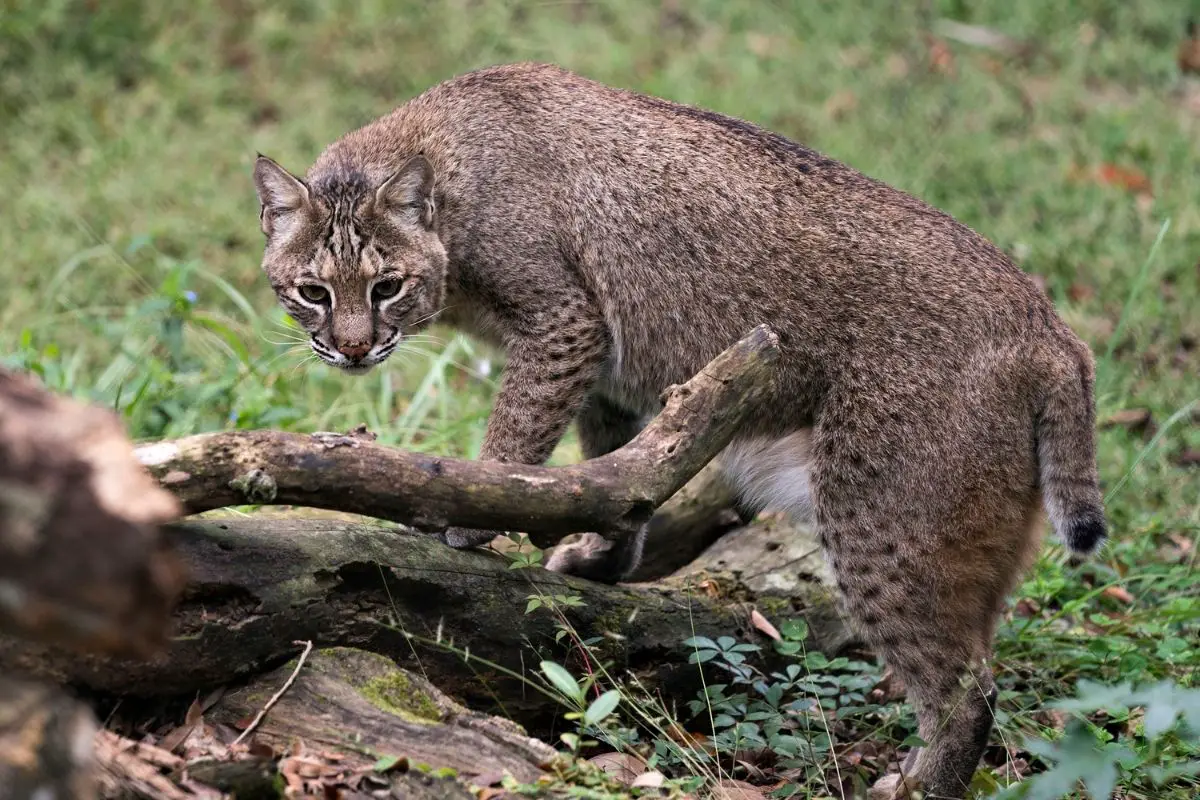
Bobcats can breed with domestic kittens. Pixie bobs are hybrid offspring of domestic cats and bobcats – but most of the time, they are an unintentional cross. Pixie bobs are not suitable for living inside, due to their wild cat genetics.
They are affectionate and loyal, but they bond to one person only, which can make them dangerous when another person or animal comes into their territory, and they don’t like being around strangers.
Given the prevalence of hybrids between cats of different lines, as well as hybrids of cats and other wild cats such as lions, the possibility of a bobcat-cat hybrid is very high.
Such an event could even be called likely if they share the same environment, because bobcats usually don’t regard house cats as prey.
Can A Bobcat Meow Like A House Cat?
Bobcats are solitary animals that hiss, growl and purr. Their cry resembles an infant crying, but does not really sound like the cat meow we are used to.
Male bobcats compete over mating rights during the spring – making a very distinctive sound that you will be familiar with if you live in bobcat country.
This noise is to draw the attention of nearby females, who will then choose a mate based on size and strength.
How To Tell If My House Cat Is Mixed With A Bobcat?
Bobcats have very big ears and large eyes. Their fur is long and thick. Domestic cats have smaller eyes and shorter fur.
To tell if your pet is a domestic cat/bobcat cross-breed, then you should pay particular attention to the shape of the head and eyes. Bob kittens will have oval shaped heads, and eyes that are circular, whereas house cat kittens will have round heads and oval eyes.
If you do find bob kittens in the wild, keep your distance and don’t interfere with them – mother cats can get vicious if they are defending their young.
Final Thoughts
In conclusion, there are many similarities between bobcats and house cats. Both species are carnivores, both territorial, have many features common to cats around the globe, and both are highly intelligent.
However, there are also some major differences between the two species, such as size, coloration, habits, and even how they communicate.
These differences make it easy to tell them apart, but if you ever find yourself wondering whether your new pet is a bobcat or a house cat, this article covers everything that you need to know to tell the two species apart.
After reading Bobcat VS House Cat, you should also be able to differentiate a house cat from a bobcat in the wild, and know what to look for if you are hoping to spot a bobcat.
We hope that this article has helped you learn more about both kinds of cat! Continue Reading our Cats Section and read more interesting topics.
